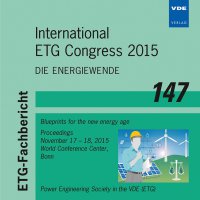Comparative analysis of European Grid Codes and compliance standards for distributed power generation plants with respect to future requirements of ENTSO-E and CENELEC
Conference: International ETG Congress 2015 - Die Energiewende - Blueprints for the new energy age
11/17/2015 - 11/18/2015 at Bonn, Germany
Proceedings: International ETG Congress 2015
Pages: 6Language: englishTyp: PDF
Personal VDE Members are entitled to a 10% discount on this title
Authors:
Kalverkamp, Frederik; Schowe-von der Brelie, Bernhard; Nguyen, Thien-Duc (FGH GmbH, Aachen, Germany)
Mertens, Tim (RWTH Aachen University, Aachen, Germany)
Meuser, Mark; Schowe-von der Brelie, Bernhard (FGH Zertifizierungsgesellschaft mbH, Aachen, Germany)
Abstract:
The severe increase of distributed generation (DG) has led to a significant change of the European electrical power supply system. Especially in Germany a dynamic development of grid codes and technical guidelines could be observed over the last decade. As the latest example the German grid code VDE-AR-N-4120 can be given - for customer installations connected to the high-voltage level of 110 kV -, which was established in January 2015. Furthermore, it is intended to replace the existing BDEW Medium Voltage Guideline within the next year. Even in other European countries grid codes and compliance verification procedures are under permanent examination – depending on the national targets and shares of DG. Parallel to national specifications there are European guidelines which – as a framework - are intended to strive for harmonized grid codes for the overall European electrical power supply system within the next 3-4 years. Based on a study, that was ordered by the European Commission and published in 2011, FGH investigated the latest similarities and differences among European countries in terms of technical requirements for DG on the one hand as well as their compliance procedures on the other hand. In this context, country-specific grid codes, which provide information on transmission as well as on distribution systems, and further guidelines according to German technical guidelines number 3, 4 and 8 of FGW e.V. have been considered. In addition to an overall comparison between all members of the European integrated network, an intense comparative analysis has focused on five selected European countries (Germany, France, UK, Poland and Turkey). Supplementary, new requirements of the future European grid codes by ENTSO-E and CENELEC are included in a consecutive analysis in order to identify necessary changes in the existing standards, which partially affect fundamental modifications for manufacturers’ DG. A total of five major categories (active power control, reactive power supply, power quality (system disturbances), fault-behavior and protection concepts) are integrated in most of the European grid codes, differences can be found in the quantitative and qualitative design. Active power control in case of underfrequency and dynamic grid support only represent two examples of the significant disparities. The differences of the compliance verification processes range from highly regulated certification to no specifications at all. This contribution gives an insight on the status quo of European Grid Codes and on the future challenges for system and plant operators, regulators and DG manufacturers, that they have to face already today.


